The Big Sky Country or the Treasure State — that’s Montana, the fourth-largest state by area and larger than Japan! The state is abundant in rivers, reservoirs, and stunning natural parks. Moreover, around 25% of the state’s territory is forested.
Naturally, these wild ecosystems host a myriad of unique plant species, and many are native to the state. Trees, shrubs, ferns, grasses, vines … you’ll find species of each plant type in Montana!
If you’re planning a trip to the state or are just eager to get away from the city and reconnect with nature, check out this article that presents native plants in Montana. Depending on what area you’ll be visiting, you may stumble upon some of them (just imagine the excitement of identifying a plant species you’ve previously read about!).
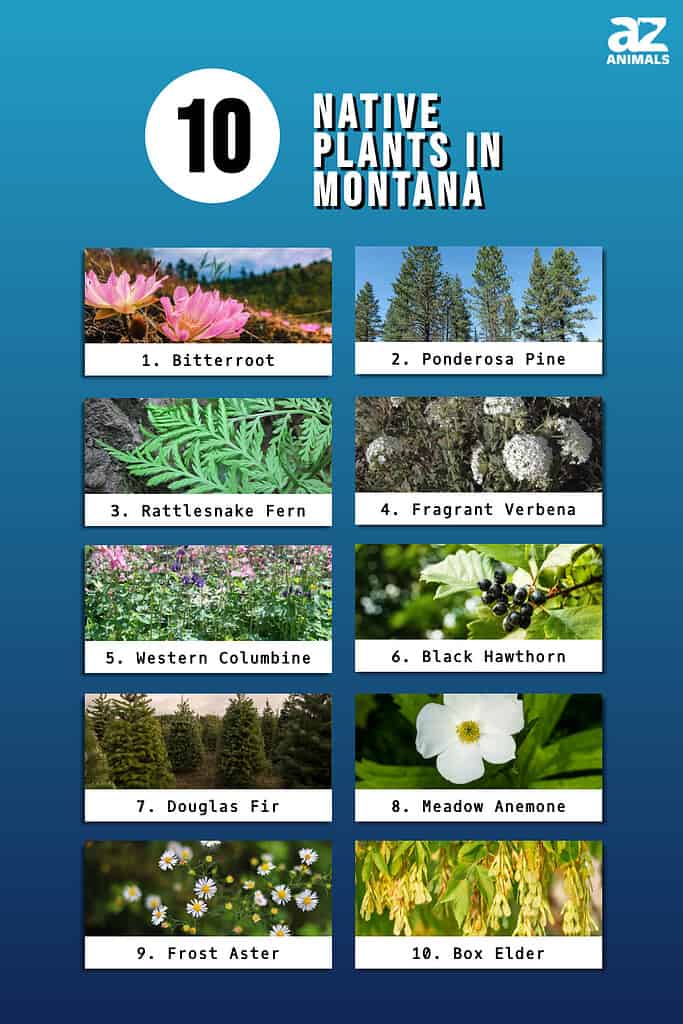
1. Bitterroot
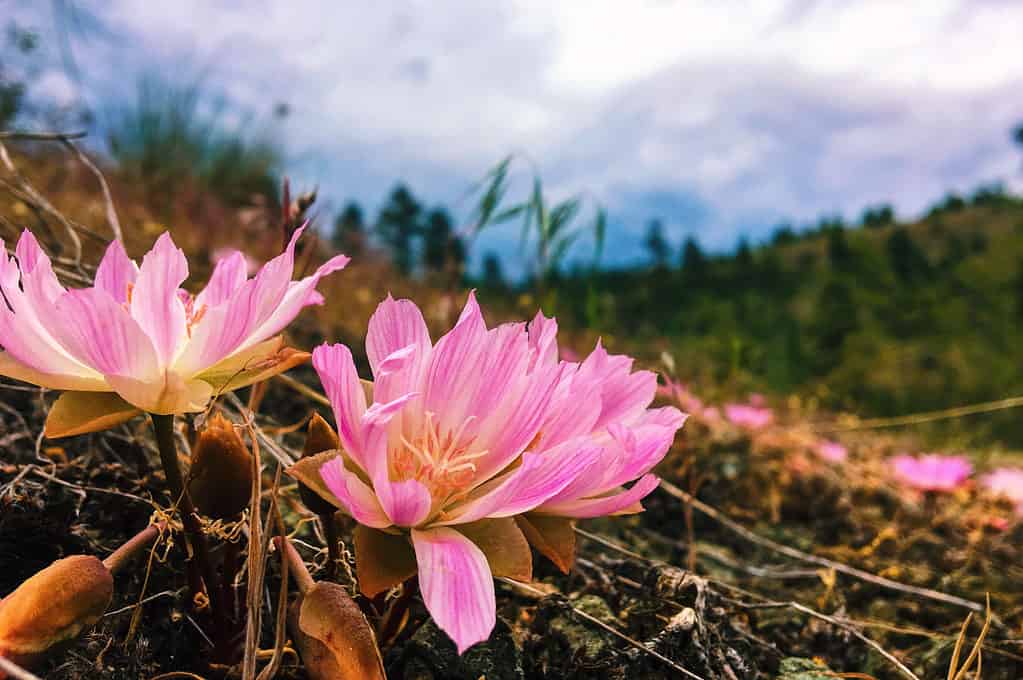
Bitterroot plants are found in forests, open bushlands, and grasslands, where they prefer gravel or dry, rocky soils.
©Veronika Gaudet/Shutterstock.com
| Bitterroot | |
|---|---|
| Scientific name | Lewisia rediviva |
| Plant type | Small perennial herb |
| Distribution | North America |
Bitterroot is a small perennial herb with short, leafless stems growing only up to 1.12 inches tall. Each stem has one white-pinkish flower with 5-9 oblong-shaped sepals blooming from April until July.
This plant is highly adaptable and can survive harsh and dry conditions by regenerating from dead roots. Bitterroot plants are found in forests, open bushlands, and grasslands, where they prefer gravel or dry, rocky soils.
The roots of this herb can be made into jelly if collected early in the season, peeled, and boiled.
2. Ponderosa Pine

Ponderosa pines have bright green needles and egg-shaped cones that are purple then brown and spherical when dry.
©Dominic Gentilcore PhD/Shutterstock.com
| Ponderosa Pine | |
|---|---|
| Scientific name | Pinus ponderosa |
| Other common names | Blackjack pine, bull pine, western yellow-pine, filipinus pine |
| Plant type | Evergreen tree |
| Distribution | Western North America |
The ponderosa pine tree is one of the most common North American pine species, with the tallest ponderosa pine reaching around 268 feet tall.
A ponderosa pine’s most distinctive characteristic is the yellow-orangish bark of mature trees, having broad plates with black crevices. Moreover, they have bright green needles and egg-shaped cones that are purple at first, becoming brown and spherical when they dry.
These tall trees are adapted to surviving in dry, fire-affected regions and are considered drought resistant. On the other hand, they have low shade tolerance.
3. Rattlesnake Fern
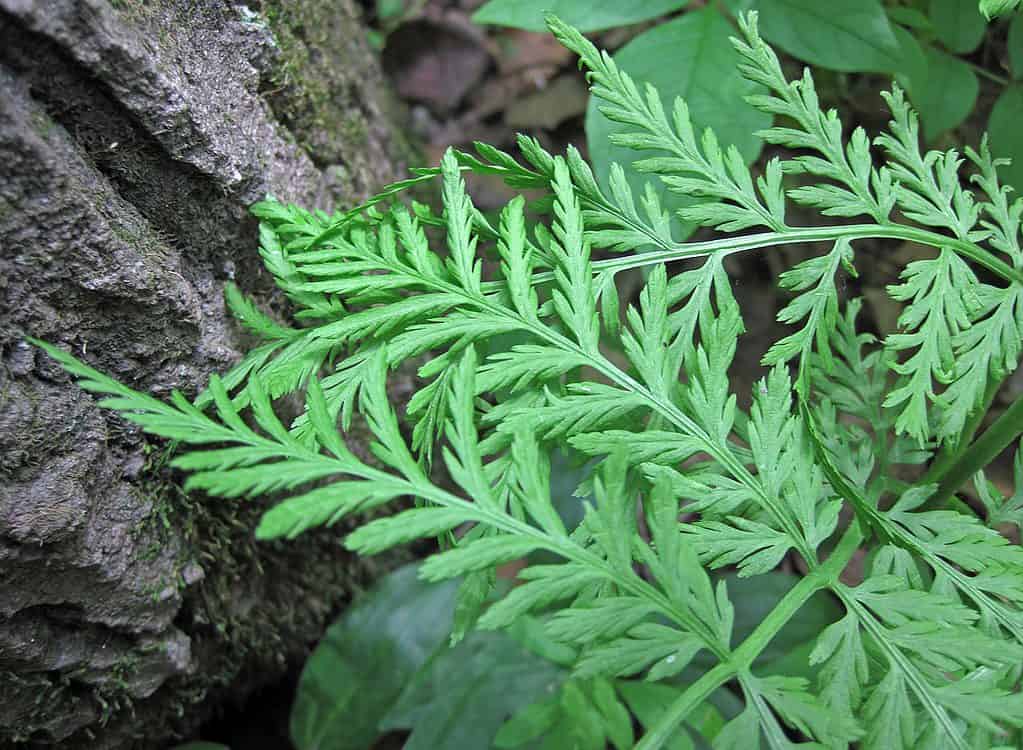
The rattlesnake fern is low-growing and rarely reaches heights of more than 1 foot.
©James St. John / CC BY 2.0, via Wikimedia Commons – License
| Rattlesnake Fern | |
|---|---|
| Scientific name | Botrychium virginianum |
| Plant type | Perennial fern |
| Distribution | United States, Mexico, Australia, Asia, Europe |
The rattlesnake fern is a low-growing perennial fern that rarely reaches heights of more than 1 foot. It has soft, bright green leaves. The round stems are light tan or pinkish at the base, becoming greener near the branches.
Rattlesnake fern is called this way only in some parts of North America because it is often found in habitats where rattlesnakes live, primarily in moist woods, preferring shaded areas. Although it’s extremely common in the United States, the rattlesnake fern is also found in Mexico, Asia, Australia, and some parts of Europe.
4. Fragrant Verbena
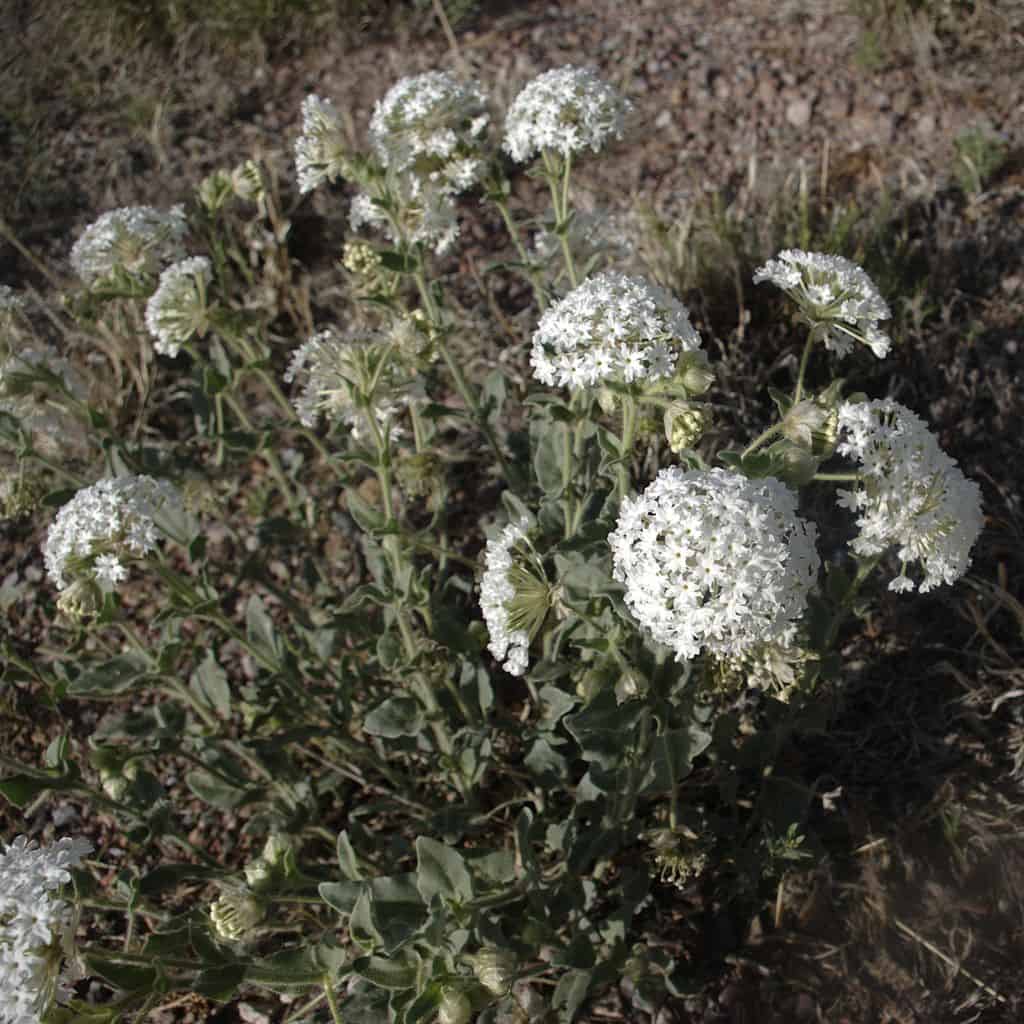
Fragrant verbena is also called Four O’clocks as its flowers open in the evening and close in the morning.
©JerryFriedman / CC BY-SA 3.0, via Wikimedia Commons – License
| Fragrant Verbena | |
|---|---|
| Scientific name | Abronia fragrans |
| Other common names | Sweet sand-verbena, prairie snowball, snowball sand-verbena |
| Plant type | Herbaceous perennial |
| Distribution | United States, Mexico |
Besides its other common names, fragrant verbena is often called Four O’clocks because its flowers open in the evening and close in the morning.
This herbaceous perennial grows around 8-40 inches tall and features sticky, hairy stems. Like its stems, the leaves are sticky and oppositely arranged. The flowers grow in clusters of up to 80 at the end of the stem. Most fragrant verbena flowers are white, but some can have pink, purple, or green shades. The fragrant verbena produces black or brown achenes.
This plant is often found in plains, savannas, and prairies, where it thrives in sandy, loose, or dry soils.
5. Western Columbine
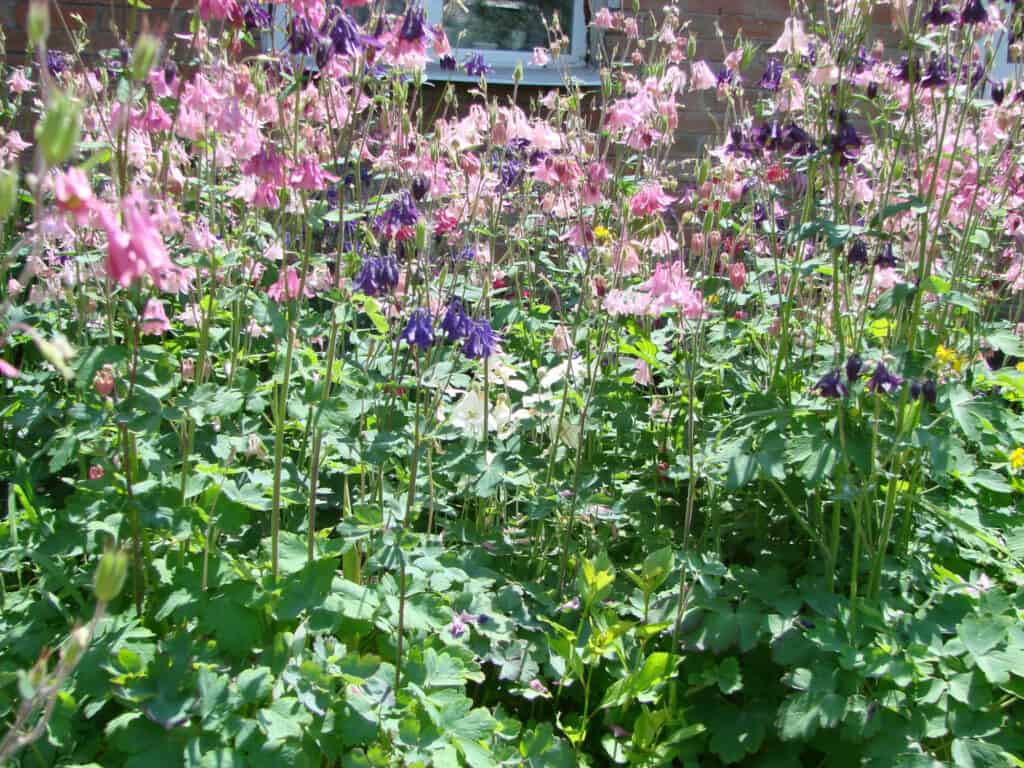
Western columbine flowers are a major attraction for hummingbirds, butterflies, bees, and flies.
©Michiru13/Shutterstock.com
| Western Columbine | |
|---|---|
| Scientific name | Aquilegia formosa |
| Other common names | Crimson columbine, red columbine |
| Plant type | Perennial herb |
| Distribution | Western North America |
The western columbine, sometimes called the crimson columbine, blooms from April to August, producing red-yellow flowers. The petal blades are yellow, while the sepals and petal spurs are red or orangish.
Western columbine flowers are a major attraction for hummingbirds, butterflies, bees, and flies. Although the flowers are edible, the other plant parts can be toxic if ingested, as they contain cyanogenic glycosides. The seeds are the most toxic and can sometimes be fatal if eaten.
6. Black Hawthorn

The black hawthorn is a bushy shrub with a trunk diameter of up to 4 inches.
©Vika Malina/Shutterstock.com
| Black Hawthorn | |
|---|---|
| Scientific name | Crataegus douglasii |
| Other common names | Douglas’ thornapple |
| Plant type | Bushy shrub |
| Distribution | Northern and western North America |
The black hawthorn is a bushy shrub having a trunk diameter of up to 4 inches. The plant can reach roughly 30 feet tall and is covered in green leaves. Black hawthorn produces white flowers that are green at the center, while the fruits are black and contain around five rock-like seeds.
Black hawthorn foliage is of utmost ecological importance, as it’s a major food source for cattle and sheep. Besides, many bird species, bears, and other animals feed on black hawthorn berries.
7. Douglas Fir
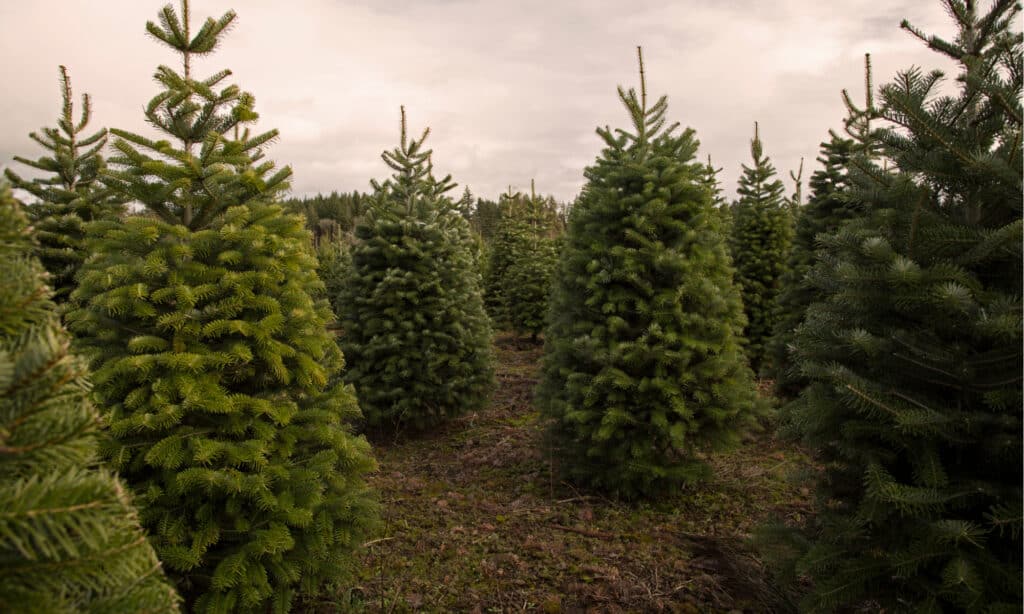
Douglas firs are evergreen conifers that can live for more than 500 years.
©Jacquie Klose/Shutterstock.com
| Douglas Fir | |
|---|---|
| Scientific name | Pseudotsuga menziesii |
| Other common names | Douglas spruce, Columbian pine, Oregon pine |
| Plant type | Evergreen conifer |
| Distribution | Western North America |
This evergreen conifer tree is long-living with lifespans of over 500 years! Douglas firs can grow 70-330 feet tall and have flat, soft needles.
Young tree bark is thin and smooth and has grayish shades. On the other hand, mature trees, meaning those that have reached roughly 80 years old, have a thick and corky bark with deep vertical fissures. These trees thrive in acidic or neutral soils and are found in almost all types of forests.
8. Meadow Anemone
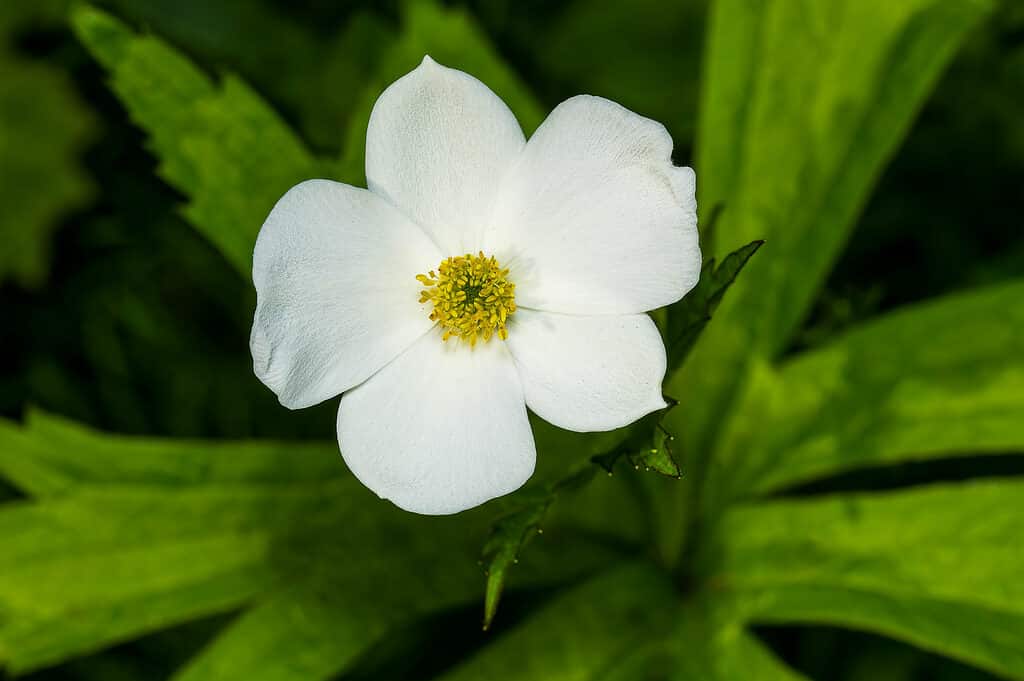
The meadow anemone’s flowers bloom from late spring to summer and attract numerous pollinators.
©Paul Reeves Photography/Shutterstock.com
| Meadow Anemone | |
|---|---|
| Scientific name | Anemonastrum canadense |
| Other common names | Round-headed anemone, meadow anemone, crowfoot, windflower |
| Plant type | Herbaceous perennial |
| Distribution | Canada, west-central and eastern United States |
The meadow anemone plant has erect hairy stems with sharply-toothed leaves. It produces white flowers with five sepals and more than 80 yellow stamens. These flowers bloom from late spring to summer and attract numerous pollinators.
Meadow anemones grow in moist environments in meadows, lakeshores, thickets, or meadows. This herbaceous perennial spreads rapidly through underground rhizomes.
9. Frost Aster
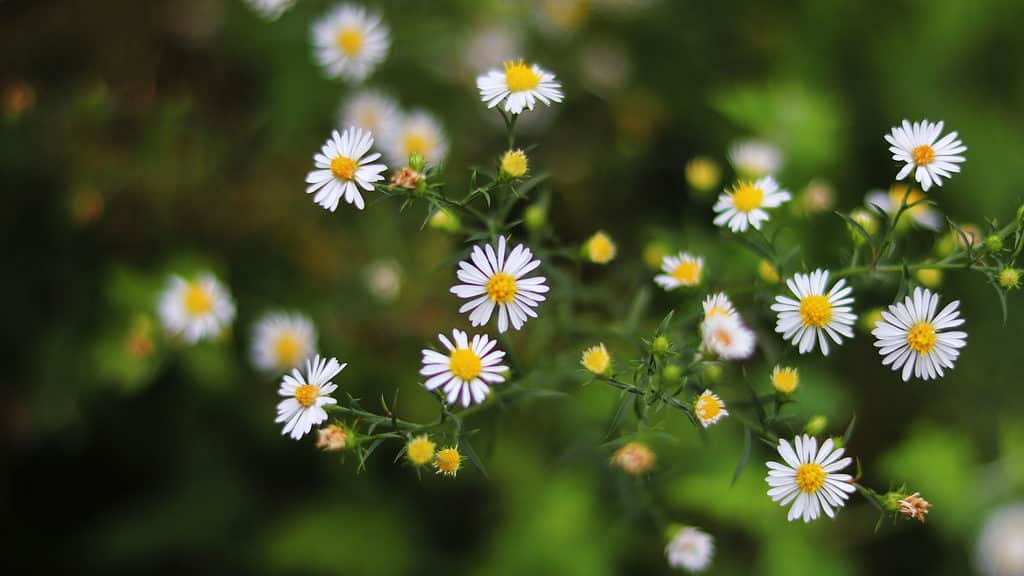
The frost aster perennial herbaceous plant grows naturally throughout most of North America, including Montana.
©iStock.com/hyejin kang
| Frost Aster | |
|---|---|
| Scientific name | Symphyotrichum pilosum |
| Other common names | White heath aster, heath aster |
| Plant type | Perennial herbaceous |
| Distribution | Central and eastern North America |
Heath aster is said to live “a double life,” perhaps a little like a superhero! That’s because it completely changes its form in October. While it looks like a common weed in the summer months, it blooms hundreds of beautiful flowers in autumn!
The frost aster perennial herbaceous plant grows naturally throughout most of North America, including Montana. Its stems can reach 3 feet tall, while its leaves are narrow and stalkless. The plant starts blooming in late summer, producing white composite flowerheads with yellow centers. The flowers measure up to 0.5 inches in diameter and last until winter.
Many frost aster cultivars are now used as ornamental plants in gardens. Some of them, including ‘Brimstone,’ ‘Pink Cloud,’ and ‘Snow Flurry,’ have even gained the Royal Horticultural Society’s Award of Garden Merit!
10. Box Elder
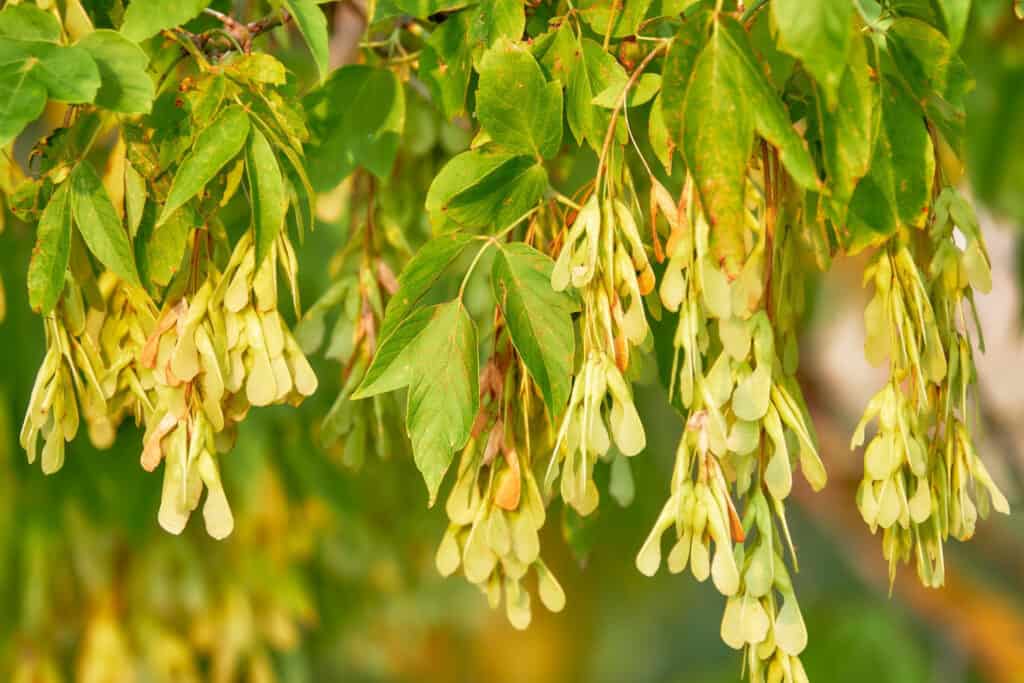
Box elder trees grow up to 80 feet tall and live around 60-75 years.
©BestPhotoStudio/Shutterstock.com
| Box Elder | |
|---|---|
| Scientific name | Acer negundo |
| Other common names | Boxelder maple, ash-leaved maple, Manitoba maple |
| Plant type | Short-lived tree |
| Distribution | North America |
Box elder trees grow up to 80 feet tall and live only around 60-75 years. They have smooth, green branches, while the trunk bark is pale gray or light brown. The leaves are pinnately compound, each having 3-7 leaflets. Box elder trees produce yellow-green flowers in early spring.
These trees are common throughout North America and thrive best in sunny areas with enough water. Moreover, they’re often found in hedges and around houses. The seeds these trees produce are a food source for some birds and squirrels, while boxelder bugs cluster their eggs in box elder bark crevices.
Summary of 10 Native Plants in Montana
Here’s a recap of the 10 plants we looked at that are native to the state of Montana.
| Number | Plant | Scientific Name | Plant Type | Distribution |
|---|---|---|---|---|
| 1 | Bitterroot | Lewisia rediviva | Small perennial herb | North America |
| 2 | Ponderosa Pine | Pinus ponderosa | Evergreen tree | Western North America |
| 3 | Rattlesnake Fern | Botrychium virginianum | Perennial fern | United States, Mexico, Australia, Asia, Europe |
| 4 | Fragrant Verbena | Abronia fragrans | Herbaceous perennial | United States, Mexico |
| 5 | Western Columbine | Aquilegia formosa | Perennial herb | Western North America |
| 6 | Black Hawthorn | Crataegus douglasii | Bushy shrub | Northern and western North America |
| 7 | Douglas Fir | Pseudotsuga menziesii | Evergreen conifer | Western North America |
| 8 | Meadow Anemone | Anemonastrum canadense | Herbaceous perennial | Canada, west-central and eastern United States |
| 9 | Frost Aster | Symphyotrichum pilosum | Perennial herbaceous | Central and eastern North America |
| 10 | Box Elder | Acer negundo | Short-lived tree | North America |
The photo featured at the top of this post is © Veronika Gaudet/Shutterstock.com
Sources
- Gardenia, Available here: https://www.gardenia.net/native-plants/montana
- Blanchford Landscape Group, Available here: https://www.blanchfordlandscape.com/blog/best-native-plants-southwest-montana-landscape
- ProQuest, Available here: https://www.proquest.com/openview/a0a570a6c504048dfbbd665c24c86af7/1?pq-origsite=gscholar&cbl=24102
Thank you for reading! Have some feedback for us? Contact the AZ Animals editorial team.






